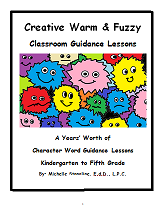Midterm--History of Sandtry Therapy Student #2
by Julie Berger
(Atlanta, GA, USA)
The History of Sand Tray Therapy
Dr. Margaret Lowerfeld, British pediatrician and child psychiatrist, is generally credited with the development of the therapeutic use of miniature figures in a tray of sand at her Clinic for Nervous and Difficult Children which she opened in London in 1928. Many children were coming to her because they had been traumatized after the war between Poland and Russia. Dr. Lowerfeld wanted to find a way to directly access the children’s thinking so she developed the World Technique where she provided miniature toys in baskets for children waiting in her clinic and asked them to “make a world.” She got the idea of playing with miniature toys after reading the book Floor Games (1911) by H. G. Wells where he talked about sitting on the floor playing with his two sons. The children then proceeded to place the miniatures in a sand box in the clinic.
The idea of putting miniatures into sand was expanded and popularized by Dora M. Kalff, in Switzerland, based on the psychological principles of Carl Jung, and she created the term “sand play.” Being a neighbor and friend, Carl Jung recognized Kalff’s intelligence and encouraged her to pursue a psychological career for two reasons. First, she was a widowed concert pianist and needed a job that would provide her with more money. In addition, when Jung’s children went to Kalff’s house to play, they always came back subdued. In 1954, Kalff attended a lecture presented by Margaret Lowenfeld on the World Technique. She was intrigued and impressed with the possibility of using the World Technique with children. With Jung’s encouragement, Kalff went to London to study the World Technique with Margaret Lowenfeld in 1956.
Although both Lowenfeld and Kalff used sandplay therapy, they had different approaches. Dr. Lowenfeld customarily interpreted the Worlds for the children before the end of treatment while Dora Kalff recognized that a delayed interpretation was important as it allowed the client the opportunity to undergo transformation at the deepest layers of the psyche. Lowenfeld regarded the World Technique as a way for children to communicate and express their thoughts and emotions as well as be a vehicle for the release of conflicts and tension resulting from discrepancies between their inner and outer realities. Kalff saw that the therapist’s silent, but knowing attendance to the sandplay process activated this potential in the client because according to the fundamental Jungian concept, the psyche has an inherent tendency to move toward wholeness. Kalff saw the immediacy of the re-ordering of the psyche occurring in the creation of the sandplay itself. With her Jungian background and deeply intuitive nature, Kalff recognized that a process of transformation occurred through a series of sandplays and felt it was a perfect vehicle for the Jungian treatment of children. Kalff was responsible for the idea of putting the miniatures on shelves.
Sand tray therapy was originally developed for children because cognitively, they have not yet developed the abstract thinking skills of adults so this therapy was a way for the children to communicate. Now, it is also used for adolescents and adults, and with individuals, groups, couples, and families in a wide variety of clinical settings for treatment of psychiatric disorders, trauma, and for developing personal growth.
Disclaimer: This website and its content is intended for trained licensed mental health professionals and school certified mental health professionals to use for their clients / students at their own discretion.
*If you ignore the disclaimer above are using these techniques on yourself and you feel any discomfort or upset it is highly suggested that you seek out a licensed mental health professional immediately.
"Beyond Art Therapy" is the concept from Dr. Stangline that combines all creative fields in therapy. It is not the traditional "art therapy" but goes beyond to include sand tray therapy, play therapy, mindfulness, meditation, color therapy, cognitive behavioral therapy, and a vast majority of other therapies.
For any other type of mental health emergency call your local 911 / Police Number immediately.
Dr. Stangline does not offer advice / suggestions to anyone who is not a professional mental health provider, or a student who is studying this field and has questions about mental health programs of study.
See our Exciting Selection of eBooks:
Award Winning:
Creative Counseling 101 eBook
Our Best Seller!
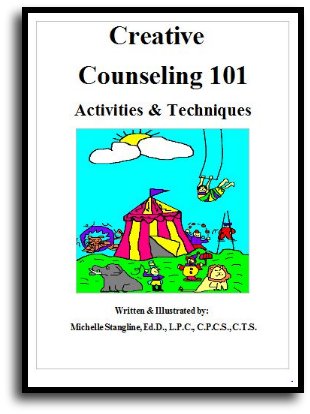
Step By Step Therapy:
Learn how to be a more Creative Therapist with the Book that started it all!
- Graduate School Counseling book used by hundreds of graduate counseling students!
- Includes full color reproducible worksheets with most activities.
- Winner of the Counselor Writer of the Year Award, 2011, Georgia Regional Award
Download Your Copy Today Only $39.95:
See Creative Counseling 101 eBook Information Here:
Get the Set
of all four
eBooks for only $98.95:
An incredible collection of how to do therapy eBooks!
A $159.80 Value,
You Save Over $60!
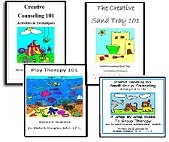
Get your complete set of the Creative Counseling 101.com eBooks by Dr. Michelle Stangline for only $98.95, that's less than $25.00 per eBook (Regular Price is $39.95 for each eBook.).
Your complete set includes:
- Creative Counseling 101
- Creative Group Counseling 101
- Creative Play Therapy 101
- Creative Sand Tray 101
For more information click the link below:
See Complete Set of eBooks For Sale Here:
New!!! "Beyond Art Therapy" 101 eBook
Over 300 pages of Beyond Art Therapy activities and techniques. Learn what I teach graduate counseling students!
See the link below for more information.
Only $39.95
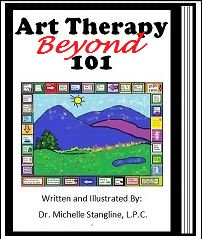
See More Invividual eBooks For Sale:
Sand Tray Therapy 101 eBook:
Learn how to do Sand Tray Therapy or enhance your skills.
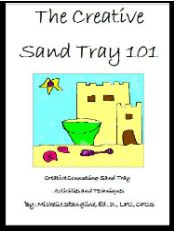
Play Therapy 101 eBook
Learn how to do play therapy or enhance your skills.
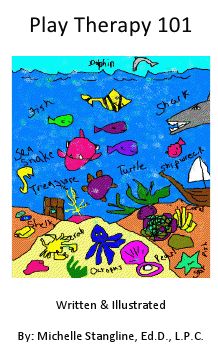
Small Group Counseling eBook For Sale:
Learn how to do creative group therapy and enhance your skills.
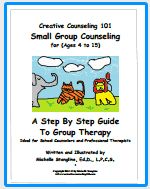
School Counselor Guidance Lesson & Social Stories eBook for sale:
Get a year's worth of school counselor guidance lessons with "Creative Warm & Fuzzy Classroom Guidance Lessons eBook". Introduce your students to the "Warm & Fuzzy Way". Click the link below for more information:
Warm & Fuzzy School Counselor Guidance Lessons eBook
